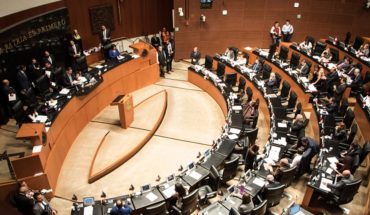The government of Javier Milei deactivated the call that was planned for before the end of the month of the Wage Council to update the Minimum, Vital and Mobile Wage (SMVM). It is in response to the tension with the CGT and other workers’ and social confederations due to the strike and the mobilization of the 24th in protest against the economic package of the ruling party. According to Mariano Martín this Tuesday in Ámbito newspaper, the income floor has been 156 thousand pesos since last December and only in that month, in which the value had its last increase of 8.5%, inflation was 25.5 percent. The most critical economic variable that depends on the minimum wage is the value of social plans, which are automatically adjusted and on which more than 1.2 million beneficiaries depend, and also affects retirement benefits and unemployment insurance. The call in January to the Council on Employment, Productivity and the Minimum, Vital and Mobile Wage was one of the first confirmations of the Government. The Secretary of Labor himself, Omar Yasín, had placed this debate between trade unionists and employers between the 20th and 30th of this month. His prognosis, of course, had been made before the CGT declared a 12-hour strike for the 24th and counted on the support of the two CTAs and the bulk of the social movements for the occasion, both for that measure and for the projected march to Congress. At that time, it was key as a parameter for other wage negotiations and, to a lesser extent, for the direct impact on a portion of workers not governed by collective bargaining agreements. The latter number became increasingly meagre as formal salaries grew above the minimum and the greatest incidence of the base salary became the value of social plans. Currently, the beneficiaries of the Empower Work program earn 78,000 pesos, half of the minimum wage. The paradox is that the Wage Council has 32 members divided between representatives of workers’ confederations (most of them from the CGT, and some seats for the two CTAs) and the employers’ chambers (commerce, industry, construction, banking, SMEs and the stock market) that decide the value of an index that in one case their representatives will not charge. and in another they will not pay. Only the State, which usually acts as arbiter, is the real payer of the minimum wage. Also, because it guarantees the floor of retirement assets and adjusts the value of unemployment insurance. Yesterday Héctor Daer, co-secretary general of the CGT, took advantage of his participation in the Congress in the debate on the DNU to demand “the urgent convocation” of the Wage Council. Until the previous government, the workers’ federation raised the importance of a disengagement from the Council’s social plans to prevent discussions for different interests from being mixed. Alberto Fernandez came to evaluate it but ruled it out due to pressure from the piquetero groups, which use the negotiation carried out by the workers’ federations to obtain updates to the plans, or at least that was the case until last year. According to the government’s numbers, the minimum wage rose 124 percent last year between April (the first of the three calls for that period) and December, against a 156 percent variation in the basic basket. The net loss of purchasing power is attributable to Fernández’s management. And in December alone, with a change of government, it lost 15% of its purchasing power. In the historical series, we have to go back to before 2004 (prior to the resumption of the Wage Council) to find a lower income floor than the current one.
The government suspended the call to the Wage Council
January 16, 2024 |





